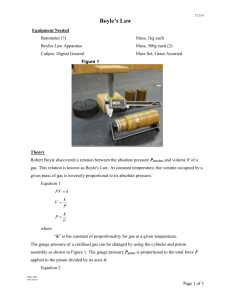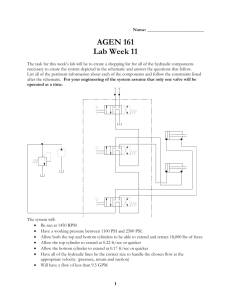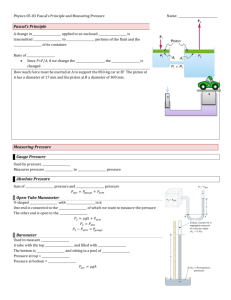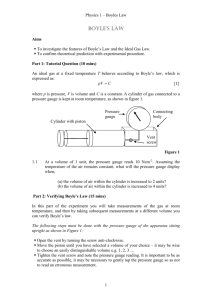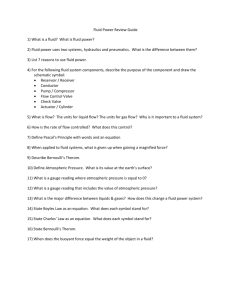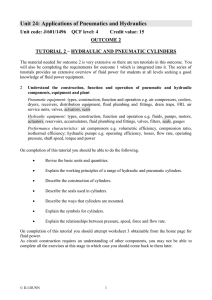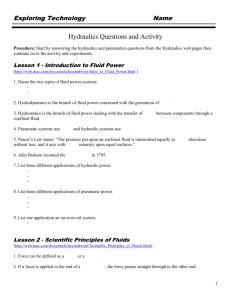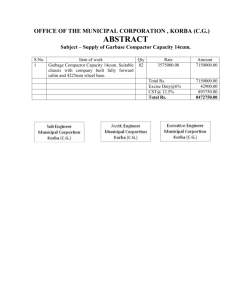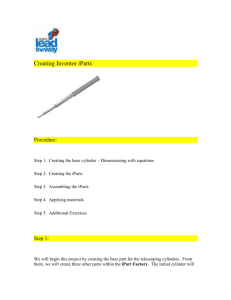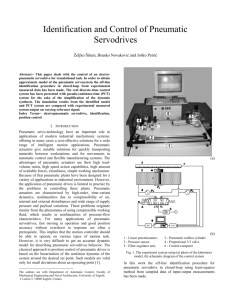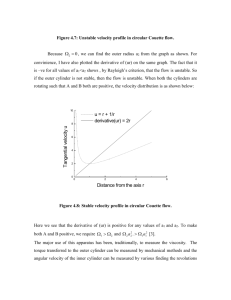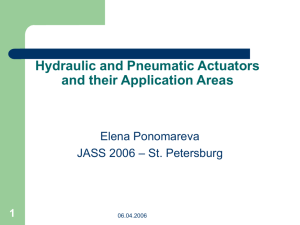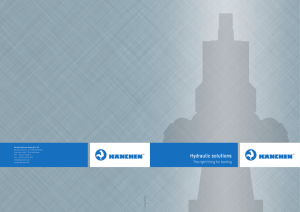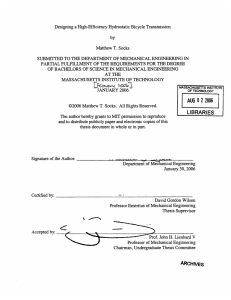Fluid Power Practice Problems
advertisement
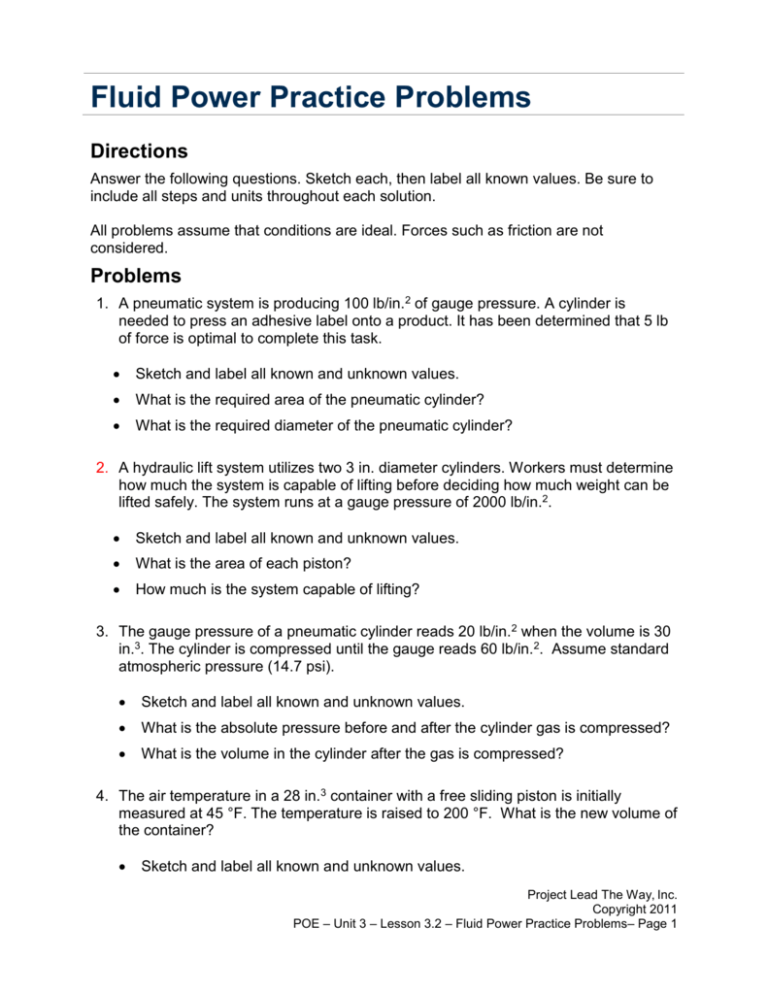
Fluid Power Practice Problems Directions Answer the following questions. Sketch each, then label all known values. Be sure to include all steps and units throughout each solution. All problems assume that conditions are ideal. Forces such as friction are not considered. Problems 1. A pneumatic system is producing 100 lb/in.2 of gauge pressure. A cylinder is needed to press an adhesive label onto a product. It has been determined that 5 lb of force is optimal to complete this task. Sketch and label all known and unknown values. What is the required area of the pneumatic cylinder? What is the required diameter of the pneumatic cylinder? 2. A hydraulic lift system utilizes two 3 in. diameter cylinders. Workers must determine how much the system is capable of lifting before deciding how much weight can be lifted safely. The system runs at a gauge pressure of 2000 lb/in.2. Sketch and label all known and unknown values. What is the area of each piston? How much is the system capable of lifting? 3. The gauge pressure of a pneumatic cylinder reads 20 lb/in.2 when the volume is 30 in.3. The cylinder is compressed until the gauge reads 60 lb/in.2. Assume standard atmospheric pressure (14.7 psi). Sketch and label all known and unknown values. What is the absolute pressure before and after the cylinder gas is compressed? What is the volume in the cylinder after the gas is compressed? 4. The air temperature in a 28 in.3 container with a free sliding piston is initially measured at 45 °F. The temperature is raised to 200 °F. What is the new volume of the container? Sketch and label all known and unknown values. Project Lead The Way, Inc. Copyright 2011 POE – Unit 3 – Lesson 3.2 – Fluid Power Practice Problems– Page 1 What are the absolute temperature readings initially and after the temperature has been raised? What is the volume in the cylinder after the temperature has been raised? 5. A 60 ft3 compressor tank container has a gauge pressure of 160 lb/in.2 and a temperature of 70 °F. The temperature after some time decreases to 40 °F. Find the final pressure in the tank. Assume standard atmospheric pressure. Sketch and label all known and unknown values. What are the absolute temperature readings initially and after the temperature decreases? What is the absolute pressure of the system before the temperature decreases? What is the absolute pressure of the system after the temperature decreases? 6. A flow meter is attached in a hydraulic line that measures 12 gal/min. The line has an inside diameter of 1.5 in. Find the flow velocity where the fluid passes the meter. Sketch and label all known and unknown values. What is the flow rate measured as in.3 /min at the meter? What is the area of inside diameter of the line? What is the flow velocity where the fluid passes the meter? 7. A hydraulic press must be used to press-fit two components together in an assembly process. The system must generate at least 775 lb of force to perform the press fit. The piston at the input cylinder is pushed with a force of 250 lb and has an area of 30 in.2. The output can use up to 15 cylinders that are each 30 in. 2. How many cylinders are needed? Sketch and label all known and unknown values. How much mechanical advantage is required to gain the necessary force? How many output cylinders must be incorporated into the design? Project Lead The Way, Inc. Copyright 2011 POE – Unit 3 – Lesson 3.2 – Fluid Power Practice Problems– Page 2






